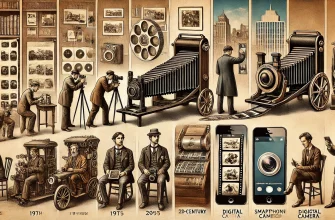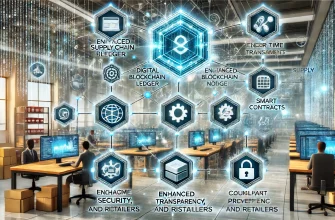The advent of 5G technology marks a significant milestone in the evolution of mobile communications, promising faster speeds, lower latency, and enhanced connectivity. As this new generation of wireless technology rolls out globally, its impact on the Internet of Things (IoT) is poised to be transformative. This article explores the ways in which 5G is revolutionizing IoT devices, enhancing their capabilities, and driving innovation across various industries.
Understanding 5G and IoT
5G Technology: Fifth-generation (5G) wireless technology is designed to deliver ultra-fast speeds, high data capacity, and minimal latency. It operates on a wider range of frequencies than its predecessors, including millimeter-wave bands, which provide significant bandwidth improvements.
Internet of Things (IoT): IoT refers to the network of interconnected devices that collect and exchange data. These devices, ranging from household appliances to industrial machines, use sensors, software, and connectivity to function autonomously and provide valuable insights.
Key Benefits of 5G for IoT Devices
- Enhanced Speed and Capacity:
- Faster Data Transfer: 5G offers speeds up to 100 times faster than 4G, enabling real-time data transfer and analysis. This is crucial for applications requiring immediate feedback and control, such as autonomous vehicles and industrial automation.
- Greater Device Density: 5G supports a higher density of connected devices, allowing for more IoT devices to operate seamlessly in a given area. This is essential for smart cities and large-scale IoT deployments.
- Lower Latency:
- Reduced Delay: 5G reduces latency to as low as one millisecond, enabling near-instantaneous communication between devices. This is vital for applications where split-second decisions are necessary, such as remote surgery and autonomous driving.
- Improved Reliability and Coverage:
- Consistent Connectivity: 5G provides more reliable connections, ensuring that IoT devices remain connected even in challenging environments. This enhances the functionality of critical applications in healthcare, transportation, and emergency services.
- Expanded Reach: The enhanced coverage of 5G networks ensures that IoT devices in remote or rural areas can benefit from robust connectivity, bridging the digital divide.
Transformative Applications of 5G-Enabled IoT
- Smart Cities:
- Traffic Management: 5G enables real-time monitoring and control of traffic lights, reducing congestion and improving traffic flow. Connected sensors and cameras provide data to optimize transportation systems.
- Public Safety: Enhanced connectivity supports the deployment of smart surveillance systems, emergency response networks, and disaster management solutions, improving overall public safety.
- Healthcare:
- Remote Monitoring: IoT devices equipped with 5G can monitor patients’ vital signs in real-time, allowing for continuous health assessment and timely intervention. This is particularly beneficial for managing chronic diseases and elderly care.
- Telemedicine: 5G enables high-quality video consultations and remote diagnostics, expanding access to healthcare services and reducing the need for physical visits.
- Industrial IoT (IIoT):
- Predictive Maintenance: 5G-connected sensors on industrial equipment can collect and analyze data to predict maintenance needs, reducing downtime and increasing operational efficiency.
- Automation and Robotics: Low latency and high reliability enable precise control of automated machinery and robots, enhancing productivity and safety in manufacturing environments.
- Autonomous Vehicles:
- Vehicle-to-Everything (V2X) Communication: 5G facilitates real-time communication between vehicles, infrastructure, and other road users, enhancing the safety and efficiency of autonomous driving systems.
- Remote Control: Autonomous vehicles can be remotely monitored and controlled, providing additional safety and operational benefits.
- Agriculture:
- Smart Farming: IoT devices powered by 5G can monitor soil conditions, weather patterns, and crop health in real-time, enabling precision agriculture and optimizing resource usage.
- Livestock Management: Connected sensors can track the health and location of livestock, improving animal welfare and farm productivity.
Challenges and Considerations
- Infrastructure Development:
- Network Deployment: The widespread deployment of 5G infrastructure requires significant investment and coordination. Ensuring comprehensive coverage, particularly in rural and remote areas, remains a challenge.
- Integration with Existing Systems: Integrating 5G with existing IoT ecosystems and legacy systems may require substantial upgrades and compatibility adjustments.
- Security and Privacy:
- Data Security: The increased connectivity and data exchange facilitated by 5G heighten the need for robust cybersecurity measures to protect sensitive information.
- Privacy Concerns: The extensive data collection by IoT devices raises concerns about user privacy and data protection. Implementing strict privacy regulations and transparent data practices is essential.
- Energy Consumption:
- Power Efficiency: Ensuring that 5G-enabled IoT devices are energy-efficient is crucial to prolong battery life and reduce environmental impact. Advances in low-power technologies are needed to address this issue.
- Regulatory and Standardization Issues:
- Harmonizing Standards: Establishing global standards for 5G and IoT interoperability is essential to ensure seamless integration and operation across different regions and devices.
- Regulatory Compliance: Adhering to regulatory requirements for 5G deployment and IoT usage is necessary to avoid legal and operational challenges.
Conclusion
The integration of 5G technology with IoT devices is set to revolutionize the way we live and work. The enhanced speed, capacity, and reliability of 5G networks will unlock new possibilities for smart cities, healthcare, industrial automation, autonomous vehicles, and agriculture, among other sectors. However, realizing the full potential of 5G-enabled IoT requires addressing challenges related to infrastructure development, security, energy consumption, and regulatory compliance. As businesses and governments collaborate to overcome these hurdles, the transformative impact of 5G on IoT will become increasingly apparent, driving innovation and improving quality of life globally.








